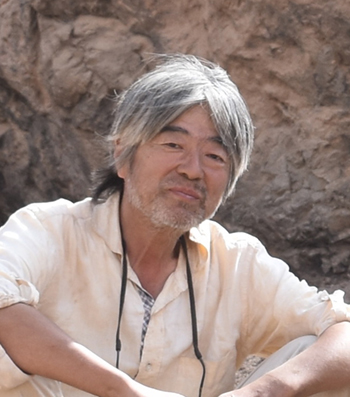

Director's Message
My area of specialization is prehistoric archaeology, a field of research that investigates human culture and history in eras before the advent of writing. In this field, researchers examine how people behaved, what technologies they invented, and how societies were developed thousands or tens of thousands of years ago as well as in the more distant past. Research is conducted using evidence from fieldwork like excavation of archaeological sites and multifaceted analyses of the artifacts obtained there.
Although I have described my area of specialization as one example, numerous fields attempt to explain the history of the world through the same type of research on object-related evidence. These include planetary science and minerals, earth science, including the study of rocks, biology represented by flora and fauna, and cultural history—art history, architectural history, and cultural anthropology. The University Museum brings together scholars and graduate students of the University of Tokyo, who are attempting to conduct research on objects in these fields as well as related and multidisciplinary fields. Research has also been conducted in recent years on exhibition techniques for objects. Although a closer examination reveals that these fields are separate, this research and education facility shares the key phrase of “research on objects.”
In more detail, the museum has organized, stored, studied, and shown objects and materials to the general public that have been collected for research and education since the University of Tokyo was founded in 1877 and that are still being collected today. Through these activities, the museum strives to contribute to the university's research and education and its dissemination of information to society.
The University Museum refers to the objects and items that make up research materials as “specimens.” Upon hearing “specimen,” some people may have the impression that this signifies models or product reproductions used in the study of science. However, actual materials make up the bulk of the University Museum’s collection. We call these materials “specimens” because they represent the types and qualities of individual research subjects. This applies to natural history materials but also cultural history materials (such as paintings and handicrafts) because the latter refers to objects and materials that represent the cultures and human actions of their eras.
Today, the University Museum has more than 3.5 million specimens, a number that is increasing exponentially each year. These specimens demonstrate the history of the natural world and human societies. Further, as the University of Tokyo is Japan’s oldest university, they also represent the history of higher education and academic activities in Japan. Accordingly, we have been making efforts in recent years to collect, study, and utilize even the machinery that has been used in research and education over time as specimens.
Please visit our exhibition and public facilities if you want to learn more about the University Museum’s research and educational activities. There are three main facilities. The first is the main museum next to the Kaitoku Gate on the Hongo Campus. The second is the Koishikawa Annex in the Botanical Gardens, Graduate School of Science. There is also the JP Tower Museum INTERMEDIATHEQUE in Marunouchi, Tokyo operated by an endowed research department. We have also opened many collaborative exhibition rooms with local governments and institutes across Japan and mobile exhibition sites, called “mobile museums,” inside and outside the country.
I believe that the university's unique research capability is what allows us to produce these multifaceted, appealing exhibitions. The main museum on the Hongo campus displays parts of the University Museum’s research results to the public in the UMUT Hall of Inspiration—From Solar System to Humanity, the permanent exhibition. Visitors can also tour the actual age measuring site.
The University Museum was created through the 1996 reorganization of the University Storage Center for Research Materials, which was established in 1965. I am pleased to announce that the University Museum began a new chapter in April 2020 as an interdisciplinary research institute of the University of Tokyo. In other words, it works as an organization that constantly promotes interdisciplinary research spanning many academic fields. I think this is a wonderful opportunity to reaffirm and further develop our comprehensive research policy that has held up for more than half a century since the time of the University Storage Center for Research Materials.
All of us at the museum will continue using appealing exhibition techniques to display the cutting-edge research results produced at the university to the public. We will also continue working to contribute further to research, education, and the sharing of information with society. I would like to request for the continued understanding and support of the public as well as senior staff members, volunteers, and other involved people.
| Yoshihiro Nishiaki, Ph.D., |
| Professor, Prehistoric Archaeology |
